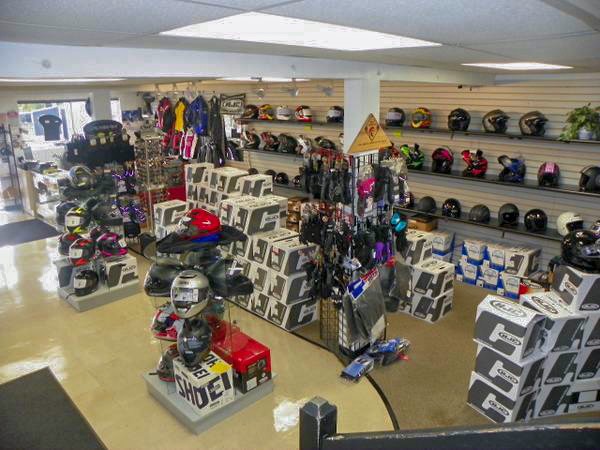Explore the most up to date Motocross Gear NZ for Every Degree of Rider
Explore the most up to date Motocross Gear NZ for Every Degree of Rider
Blog Article
A Thorough Take A Look At Motorcycle Components: What Every Biker Ought To Know
A detailed understanding of motorbike components is not merely advantageous but essential for any type of motorcyclist aiming to maximize efficiency and safety and security. Each part, from the engine's complex workings to the dependability of brake systems, plays a crucial role in the general experience and capability of the bike.
Recognizing the Engine
The engine, frequently considered the heart of a motorcycle, is a complex setting up of elements that operate in consistency to convert fuel right into activity. At its core, the engine's key feature involves the burning process, where air and fuel mix and stir up within the cylinders, resulting in regulated explosions that drive the pistons. These pistons go up and down, converting chemical power into power, which subsequently turns the crankshaft, ultimately powering the bike.

Understanding the intricacies of a motorbike engine is essential for enthusiasts and bikers alike. It not just provides understanding into exactly how bikes attain their outstanding power and speed however also help in reliable maintenance and troubleshooting, ensuring longevity and dependability when traveling.
Suspension Systems
While the engine powers the bike, the suspension system plays a crucial duty in making sure a smooth and controlled trip. The suspension system is liable for taking in shocks from the road surface area, maintaining tire get in touch with, and providing stability during cornering and stopping. It consists of two major elements: the front forks and the back shock absorbers.
Front forks are usually telescopic, wetting and consisting of a spring device. The spring prolongs and compresses to soak up bumps, while the dampening mechanism regulates the motion to stop excessive bouncing. This combination makes sure the front wheel continues to be in call with the roadway, providing premium handling and comfort.
The rear suspension, usually a monoshock or twin-shock configuration, works in a similar way to the front suspension however is tailored to support the motorbike's weight and cyclist - mx parts nz. It takes care of rear wheel activity, adding to the bike's general equilibrium and responsiveness
Suspension systems can be adjustable, enabling cyclists to adjust preload, compression, and rebound settings according to personal choices and riding conditions. This adjustability enhances performance by optimizing the motorcycle's communication with diverse surfaces. In recap, an efficient suspension system is crucial for motorcyclist convenience, security, and the motorcycle's handling prowess.
Brake Parts
Stopping power is a basic aspect of motorbike security, and it depends upon the effectiveness of the brake parts. The main components of a motorcycle's braking system consist of the brake pads, calipers, rotors, and master cyndrical tube. motocross gear. Each of these elements plays a vital duty in ensuring effective braking performance
Brake pads are crucial as they create the needed rubbing against the blades to decrease or stop the motorbike. Created from products such as sintered metal or natural composites, the selection of brake pad material substantially influences performance and durability. Calipers, housing the brake pads, apply pressure to the pads when the brake bar is engaged, assisting in call with the blades.
The blades, normally made from stainless steel or cast iron, are mounted to the wheels and act as the surface area versus which the brake pads press. Their layout, consisting of diameter and thickness, impacts additional hints warmth dissipation and quiting power. The master cylinder, attached to the brake lever, generates hydraulic stress transferred with brake lines to the calipers, guaranteeing regular stopping force.
Normal maintenance and inspection of these parts are important for optimum efficiency, avoiding wear and guaranteeing motorcyclist security on the road.
Tire Fundamentals
Beyond keeping durable stopping systems, making sure optimal tire efficiency is similarly considerable for bike safety and effectiveness. Tires are the sole call point between the motorbike and the road, making their problem essential in managing, security, and general experience high quality.

Additionally, consider the tire's age. Rubber substances break down over time, also if step appears sufficient. Examine the sidewall for the DOT (Division of Transport) code to determine the tire's age. Generally, replacement is recommended every five years, no matter wear. Investing attention in these tire basics not only optimizes performance but likewise substantially boosts riding safety and security.
Electrical Solutions
In the realm of motorbike upkeep, the electrical system plays a crucial role in ensuring trustworthy performance and rider security. This elaborate network incorporates vital parts such as the battery, generator, starter motor, and circuitry harness. Each aspect is crucial for the smooth operation of the motorbike, from ignition to lighting and communication with various sensors.
The battery works as the heart browse around this site of the electrical system, providing check these guys out the needed power to begin the engine and run devices. Routinely checking the battery's voltage and terminals for corrosion is essential to avoid unexpected failures. The alternator, on the other hand, charges the battery while the engine is running, guaranteeing a constant power supply.
To keep it, cyclists must pay attention to any kind of uncommon sounds or problems during start-up. Ensuring that the cords are free and undamaged from damages is crucial for preventing short circuits and guaranteeing capability.
Conclusion

Quiting power is an essential facet of motorcycle safety, and it hinges on the efficiency of the brake parts. The primary aspects of a motorcycle's braking system include the brake pads, calipers, blades, and master cyndrical tube.Brake pads are vital as they produce the necessary rubbing against the rotors to reduce down or stop the bike.Beyond keeping durable braking systems, guaranteeing optimal tire performance is similarly substantial for motorbike security and efficiency.In the world of motorbike maintenance, the electrical system plays a critical role in ensuring reputable performance and biker security.
Report this page